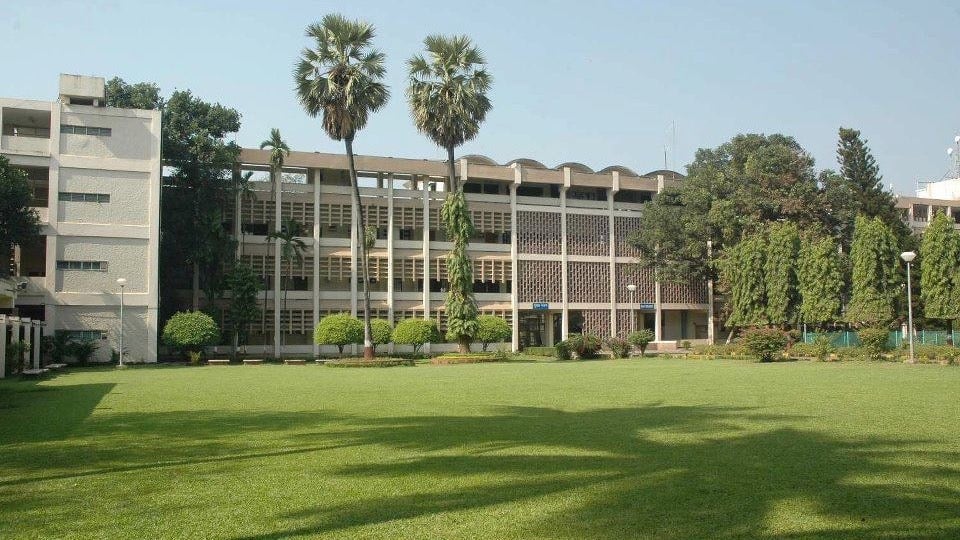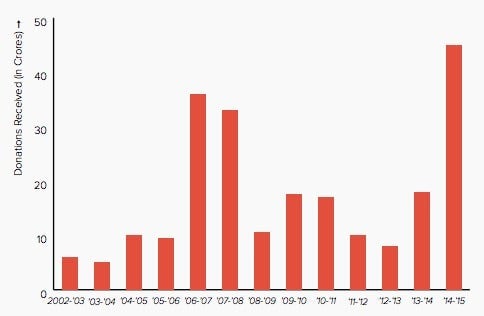As funds flow in, IIT-Bombay is finally turning into an innovation powerhouse
India’s startup giants may be raking in the big bucks but true innovation is happening in the dorms and labs of one of India’s top-tier institutes.


India’s startup giants may be raking in the big bucks but true innovation is happening in the dorms and labs of one of India’s top-tier institutes.
To get admission into one of the 23 Indian Institutes of Technology (IIT) through the rigorous entrance exam, students often spend countless days at coaching classes and nights buried in books. Yet, only 0.7% of applicants make it. Compare that to the 8% success figure of applicants to top-tier American schools, such as Caltech and the Massachusetts Institute of Technology, in 2016.
However, once in, the IITs are much more than cramming textbooks. And IIT-Bombay stands apart in particular. In a country wrestling to free itself from rote learning, the prestigious 59-year-old institute is aggressively promoting tech innovation.
In 2015, patent applications at IIT-B jumped 24% compared to five years ago, earning it the National Intellectual Property Award. While global rankings mostly give Indian universities and educational institutions a pass, largely owing to insufficient research investment, IIT-B is a rarity. It stood 13th, only behind the Indian Institute of Science (IISc), Bangalore (ranked 6th), in the revered Quacquarelli Symonds (QS) University Rankings BRICS.
Over the years, the makeup of the college has changed from wide-eyed learners to innovators: The public institute now houses more postgraduate students than undergraduate students and aims to double PhD enrollment over the coming years.
Growing support systems
Aaditya Ramdas, a 2009 IIT-B computer science and engineering graduate and now a postdoctoral researcher at the University of California Berkeley, spent much of his free time at IIT on the campus’s cricket pitch. Some of his friends and juniors, however, lived in the labs. And their efforts are bearing fruit now.
For instance, nearly a decade ago, one of Ramdas’s friends from the IIT hostel was working on Pratham (“first” in Hindi), the satellite launched by the Indian Space Research Organisation in September 2016. Some of his other peers were working on an F1 car at that time. Last May, an IIT-B team reportedly built India’s fastest sports car.
Moreover, the advancements at IIT-B are more deliberate than a fad. Its Society for Innovation and Entrepreneurship (SINE) has incubated over 55 companies since its inception in 2004. The Desai Sethi Centre for Entrepreneurship (DSCE), founded in 2015, serves up instruction and mentorship opportunities from within and outside the school.

The infrastructure available for innovators, too, has been on the rise. R&D funds quintupled from 2009 to 2015, IIT-B director Devang Khakar said. In 2014, the class of 1975 gifted students the ”Tinkerers’ Lab,” a workspace with technical resources for innovators. Donations to the Institute Development Fund, used to modernise infrastructure and build new amenities, shot up in 2014-15. Following in the footsteps of IIT-Madras, the institute is setting up a research park for startups in the heart of Mumbai.
The funds influx and improved infrastructure have given students a bigger “canvas to innovate,” Subhasis Chaudhuri, a professor at IIT-B’s department of engineering, told Quartz. “Add to this the availability of funders…and finally when you have good mentors for hand-holding, you create an ambience where innovations meet their goal and wealth is created.”
In 2014-15, for instance, IIT-B received Rs48 crore ($7,052,236) from alumni and corporations, such as the Sir Dorabji Tata Trust, Hindustan Aeronautics, and others, the institute’s annual report (pdf) shows.
Most projects, however, were still funded by government entities in 2015.
New innovations
In the past, most people sought research opportunities abroad after the IIT grind. Since the turn of the century, though, IIT-B has lost fewer of its brightest minds to foreign countries. In recent years, its talent pool hasn’t been making a beeline for big-name-big-cheque jobs either. Students and faculty are breaking new ground. Here are some recent examples:
Matsya: A team of undergraduate students could give the Indian Navy its first truly autonomous unmanned submarine that could have far-reaching consequences for defence and science sectors in the country. The “intelligent” machine is capable of re-attempting a task if one trial is unsuccessful.
Fog Watch: Scientists at IIT-B’s Centre of Studies in Resources Engineering created a satellite-based fog monitoring system to gather data that can be integrated with air, rail, and vehicular transport management to ensure safe travel.
Dry San Hygienic Rural Toilet: An IIT-B professor, Kishore Munshi, designed a stainless steel waterless toilet where waste isn’t flushed. Instead, urine is converted into fertiliser and solid waste into manure using non-chemical and natural aerobic decomposition.
Osteoarthritis treatment: The biosciences and bioengineering department came up with a liquid material that can be injected into the joints. It then forms a gel-like meshwork that allows for cartilage regeneration. The process is reportedly painless and inexpensive.
Transparent UV masks: Research scholars have engineered nanoparticles that act as a superior barrier to UV rays than off-the-shelf sunscreens. As an added bonus, it creates the illusion of smoothing wrinkled skin.